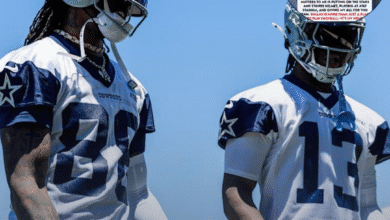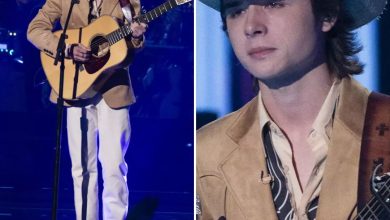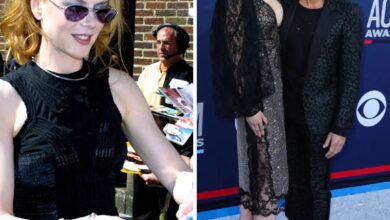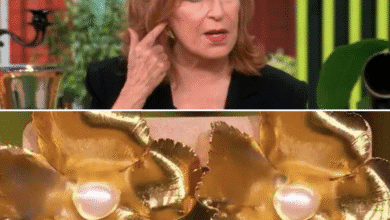Dolly Parton’s Divine Dogma: Why “You Better Get to Livin’” Still Feels Like a Gospel for Real Life. ML
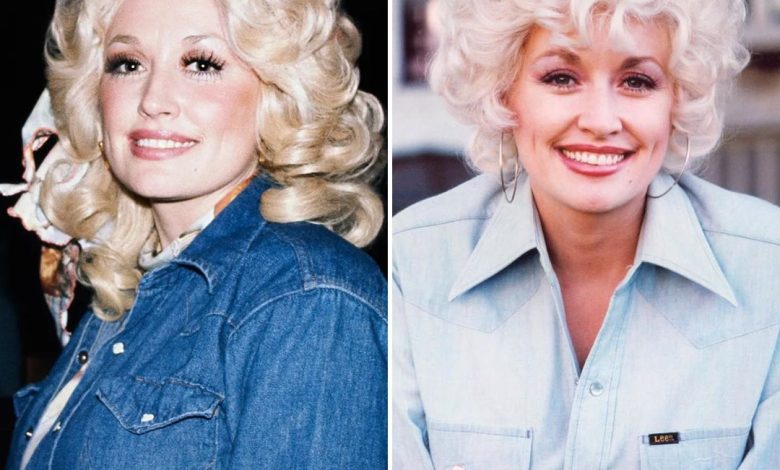

“I live by my gut, so to speak,” Dolly Parton writes in her new memoir, Star of the Show: My Life on Stage. “The God gut is what I call it. I just seem to know what I should and shouldn’t do because I pray about things like that.”
Her gut has usually been right. Parton wears many hats: singer, songwriter, philanthropist, entrepreneur, brilliant businesswoman, theme park owner, star of classic films like Steel Magnolias, 9 to 5, and The Best Little Whorehouse in Texas, and recent honorary Oscar winner.
A spiritual, earthy dreamer, who is also funny as hell and sharp as a tack, Parton has arguably crafted her personal brand more successfully than any other celebrity. In her first autobiography, 1994’s Dolly: My Life and Other Unfinished Business, she also reveals herself to be a beautifully deep, bawdy and witty writer of prose who, much like Louis Armstrong, recounts her hardscrabble beginnings and the hard luck characters who shaped her with equal parts gratitude and understanding.
But like fellow beloved and savvy icon Sophia Loren, Parton has the stories she will tell you—and the ones she won’t. This is evident from her enjoyable but lighter trilogy of coffee-table memoirs of the past few years: Dolly Parton, Songteller: My Life in Lyrics, 2023’s Behind the Seams: My Life in Rhinestones, and 2025’s Star of the Show: My Life on Stage.
Yet all of Parton’s memoirs have one thing in common: they make the reader genuinely feel happy and warm. Parton brings us along for the ride, with Kenny Rogers, Linda Ronstadt, Emmylou Harris, Andy Warhol, Willie Nelson, Tammy Wynette, Jane Fonda, Julia Roberts, Merle Haggard, Miley Cyrus, and a host of Parton’s other nearest and dearest riding shotgun.
“One of my favorite expressions is ‘Angels fly because they take themselves lightly,’” Parton writes in My Life and Other Unfinished Business. “They don’t think of themselves as angels. They just are…I’m not for a moment suggesting that I am an angel, but I have certainly known some.”

In the Good Old Days (When Times Were Bad)
“In the midst of direst poverty and despair,” Parton writes in Dolly: My Life and Other Unfinished Business, “the human spirit, especially that of children, will find some hope to cling to, some promise of a better day.”
Dolly Rebecca Parton was born on January 19, 1946, famously in a one-room cabin in the foothills of the Great Smoky Mountains in East Tennessee. The fourth of twelve children, she was the daughter of sharecropper Robert and his wife, Avie Lee, who were so poor they paid the doctor who delivered her with a sack of cornmeal.
Little Dolly was a dreamy, highly imaginative, mischievous chatterbox who communed with imaginary friends she called her “angels” and heard music everywhere: in the rhythm of her mother snapping green beans, the wild geese honking overhead. At six, she wrote her first song, “Little Tiny Tasseltop,” about her own little doll, which her beloved parents had fashioned out of a used corncob.
Though her memories at times make this era seem idyllic, Parton also doesn’t shy away from describing the misogyny, religious hypocrisy, and crushing poverty of her childhood. In one particularly harrowing scene, she recalls being held down by men from the holler while her mother treated her cut foot with kerosene and cornmeal, before sewing it up with a quilting needle.
But rather than treating this incident as a triggering trauma, Parton expresses gratitude that her mother and their mountain ancestors knew just what to do to fix her foot. Avie also knew how to make her attention-starved daughter feel special, lovingly sewing Parton a bright, colorful coat out of old scraps of fabric.
When an excited Parton wore her new coat to school, she was heartbroken when her classmates laughed at it. But she refused to take the coat off. She knew God would know how special she and the coat were.
According to Parton, “Coat of Many Colors” remains her favorite of all the songs she’s ever written. It also inspired two TV movies. “It also was a big hit, and that did a lot to help me forget that early pain,” she notes. “It’s amazing how healing money can be.”
Backwoods Barbie
By 1956, Parton was regularly singing on eccentric businessman Cas Walker’s regional television show. She was also honing her own look, modeled on the local town tramp. “I thought she was beautiful,” Parton writes. “Everybody said, ‘She’s trash!’ I laughed and said, ‘Well, if that’s trash, that’s what I want to be when I grow up!’” she recalls in My Life in Rhinestones.
But those judging her outrageous look drastically underestimated this self-proclaimed “dumb blonde.”
Once, while waiting at the bus stop for Walker’s theater to open, Parton picked up her guitar and started singing. Passersby began dropping coins into her open guitar case. Although she knew her proud daddy would not want her begging, she wanted a Jiffy Burger and soon had a regular busking business before shows. “I would carry an old, ragged shirt inside my guitar case, to put on for effect,” she writes in My Life and Other Unfinished Business. “I have to admit I could look plumb pitiful.”
She also began traveling to Nashville with her musician uncle Bill, hoping to get on stage at the legendary Grand Ole Opry. At night, they would sleep in the car, then spend the day singing to and sweet-talking Nashville power players. At one point, Uncle Bill purposefully got hit by a bus to scrape together insurance money for a portable sound system.
Success came gradually. In 1959, Johnny Cash introduced Parton on the stage of the Grand Ole Opry. Parton received three encores. “I sang…for everybody who had ever believed in me, and somehow, I believed in me,” she writes. “I guess it showed.”
Back home though, naysayers still had their doubts. In 1964, Parton became the first in her family to graduate from high school. At the ceremony, locals snickered when she announced she was going to Nashville to become a star. “I remember thinking to myself, ‘They don’t know,’” she recalls. “They just don’t know.” The next morning Parton left for Nashville on a Greyhound bus. She carried with her an old guitar, her songs, and her dreams.
Love Is Like a Butterfly
“They say love isn’t about two people gazing into each other’s eyes, it is about two people gazing outwards in the same direction,” Parton writes in My Life and Other Unfinished Business. “I believe this with all my heart. “
On one of her first days living in Nashville, Parton met Carl Dean at the Wishy-Washy Laundry mat. On their first date, he took her straight to his mother’s house, and said, “Fix this girl a plate. She’s the one I’m going to marry.”
Parton admits to being confused and intrigued by the mysterious Dean, whom she describes as a funny, handy oddball with the looks of a Marlboro Man and a taciturn nature. But she was swept away by Dean’s steady hand. “When I hugged him so hard, his chin grazed the top of my head, sending my wig flying,” she writes. “Carl never missed a beat. He caught my wig in one hand while he continued to hold me with the other. He gave me a deep, passionate kiss.”
Against her manager’s wishes, Parton and Dean secretly married in 1966. One night after a black-tie industry event, it became clear that their marriage would be an unconventional one. “He started ripping off stuff before we even got to the car,” she writes in Songteller. “He said, ‘I’m happy for you. I want you to do what you want to do. But don’t ever ask me to go to another one of them damn things, because I ain’t going.’ And he never has.”
Dean’s refusal to participate in public life led to longtime rumors about the marriage, as did Parton’s years on the road and gloriously sex-positive attitudes. Parton addresses the situation in her own coy way, revealing exactly how much she wants to. Her husband knew “that love affairs and relationships are just part of my dealings with people,” she writes. “He knows that I will always come home.”
Whatever the case, Parton’s memoirs make the bond between them abundantly clear. “I love to smell Carl’s clothes…Sometimes I’ll just smell them, especially if he’s not around…Don’t that sound silly?” she writes. “He does the same thing…he says that nobody smells like me.”

Just Because I’m a Woman
“I think of Porter as one of the most important angels in my life, even with all of his demons,” Parton writes in My Life and Other Unfinished Business.
She’s speaking about the temperamental, flamboyant country music superstar Porter Wagoner, who hired Parton to be his “girl singer” both on the road and on his hit series The Porter Wagoner Show in 1967. Over the next seven years, the duo would top the charts, squabbling all the way as Parton fought for her autonomy and voice. “Nothing and nobody has ever been able to stand in the way of me and my dreams,” she writes.
In 1974, Parton knew she had to break free, even though Wagoner controlled every aspect of her professional career. To make the point, she wrote him a song, titled “I Will Always Love You.”
“I went into his office and said, “Porter, sit down. I want to sing you a song I wrote,” Parton writes in Songteller. “When I started to sing the song, he started to cry… He got it. He said, ‘That’s the best song you ever wrote. And you can go, if I can produce that song.’ I said, ‘It’s a deal!’”
But their breakup would not be so easy. Perhaps the only time Parton breaks her generally benevolent character in her memoirs is when she writes about Wagoner, who ended up successfully suing her for $1 million and bad-mouthing her for years (the two eventually made up).
As a kind of karmic justice, Dolly’s solo career reached the stratosphere in the late 1970s, while Wagoner fell further off the charts. She crossed over into the mainstream in 1977 with “Here You Come Again,” and was forever on the road, in many ways her true home. “When you are a true wanderer and a musician who loves touring… you’re also enjoying seeing the world,” Parton writes in Star of The Show. “It’s like an addiction, in a way. It’s a thing you can’t explain unless it’s in your blood, and I sometimes think diesel is in my veins. It always has been.”
White Limozeen
On the set of her first film, 1980’s 9 to 5, Parton soon found she had a lot to learn about Hollywood. She would arrive at 8am, with her best “country-girl smile,” hair high and makeup on. “You know you make it really hard for a person to be a hateful old grouch around you,” her costar Lily Tomlin quipped. “Could at least hold back on the perkiness, say, till around at least ten?”
But as her movie career soared, Parton had less and less to smile about. She alludes to having an emotional affair with bandleader Gregg Perry that came to a head during production of 1982’s Best Little Whorehouse in Texas. Her costar Burt Reynolds was equally miserable at the time, breaking up with Sally Field mid-production. “We’d sit and bitch and moan and sling snot until we each felt so sorry for the other that our own troubles didn’t seem so bad,” Parton writes.
Overweight, exhausted, heartbroken and sick, Parton found herself profoundly depressed. “I yelled and screamed at God in ways that would curdle some people’s blood,” she recalls, “I screamed, ‘I’m going to blow my damn brains out if you don’t give me some kind of help.’”
She climbed her way out by reading the Bible and getting healthy. (Though a warning to contemporary readers: her dieting advice is problematic: including the hint to just “taste” your food before you spit it out.) While shooting 1984’s Rhinestone in New York City, Parton wrapped her shawl around an unhoused man lying next to some garbage. According to Parton, her costar Sylvester Stallone was livid and pulled the shawl back. “Don’t you put a shawl over that scum,” he hissed. “He could have made something of himself. We did.”
Parton was furious, and ripped Stallone a new one. “That could have been you, you ungrateful son of a bitch,” she said, getting in his face. “It could be an angel sent to show you what an ass you really are. At least he’s one of God’s creatures, and that’s good enough for me.”
That night, an ashamed and chastised Stallone gave the unhoused man a blanket and some money. “It was a feisty little hillbilly woman he saw in his face that night,” Parton writes. “But God was the one who really spoke to him.”

The Seeker
“Sometimes I like to run naked in the moonlight and the wind, on the little trail behind our house,” Parton writes in My Life and Other Unfinished Business. “In my imagination, I dance with the angels, do high fives with them, twirl and play tag. I love to shout at the light and rejoice and praise God. How can I not?”
As Parton has evolved into America’s most agreed upon national treasure, she has also become a powerful philanthropist. Her East Tennessee theme park Dollywood has employed thousands. Her Imagination Library, inspired by her father’s illiteracy, has donated over 300 million books to children worldwide. Ferociously unpolitical, Parton even donated $1 million to the Vanderbilt University Medical Center, contributing to the development of the Moderna COVID vaccine.
But life has had its sorrows. Her beloved Carl died in March 2025, and Parton’s various health scares have sent fans into viral meltdowns. But she still has a million plans, and gifts she hopes to give. “When I’m done, I can rest in peace knowing I’ve done my best,” Parton writes in Star of the Show. “I hope that when my time comes, I’ll leave something behind that others can use to lift themselves up.”

